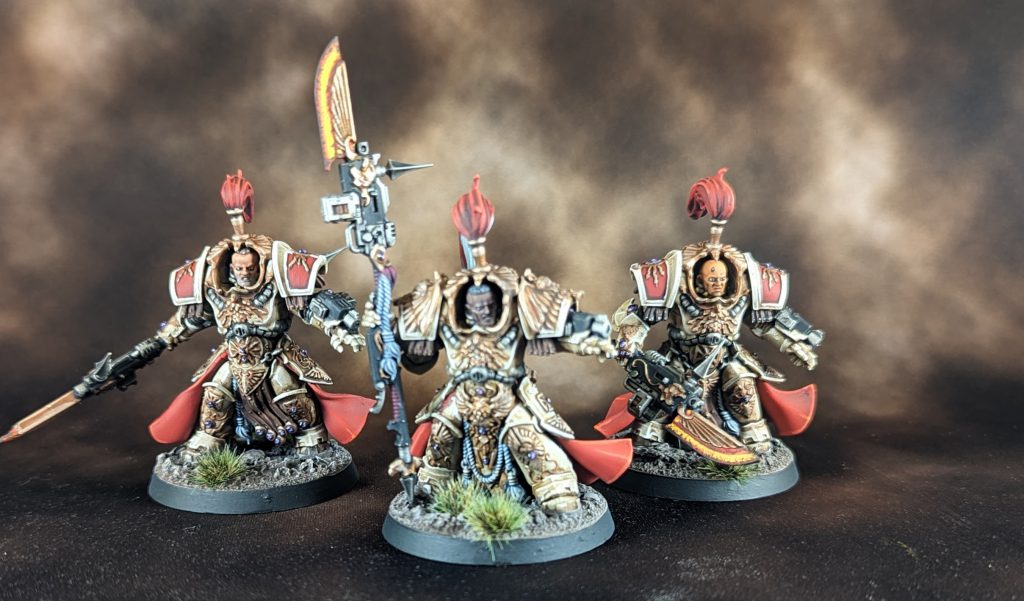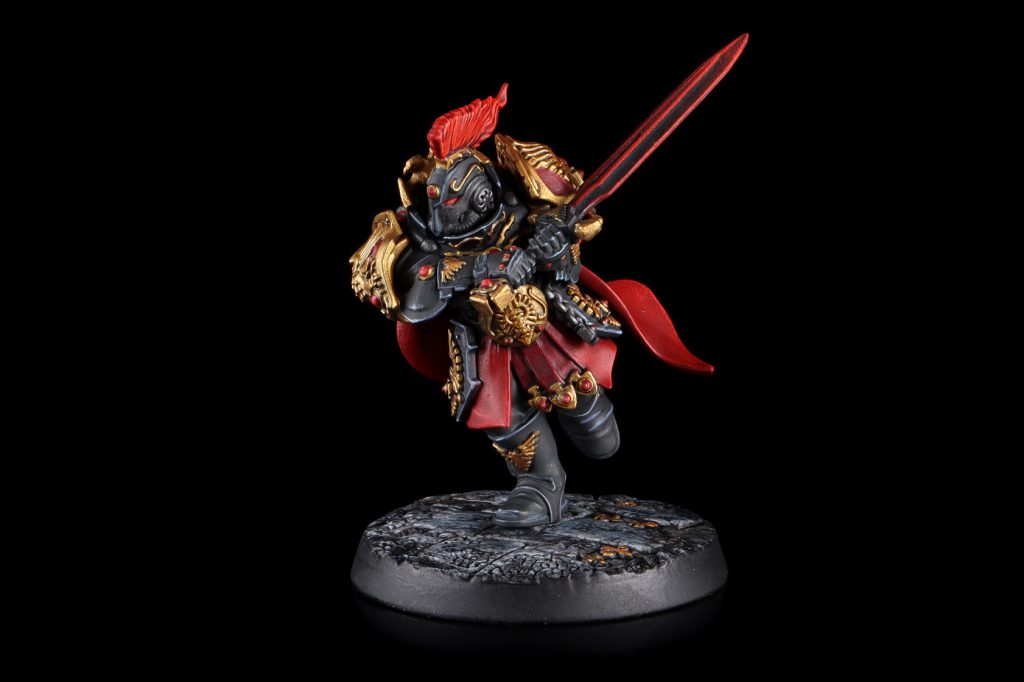This week’s Hammer of Math looks at how much less valuable Custodes got as a result of the recent changes to their codex, and whether it’s possible to quantify Rob’s joy as a result.
Warhammer 40k is a game of highs and lows. Sometimes the game is tight and fun, sometimes it’s bloated and weird, sometimes your army is fun and competitive, and other times it’s a sad joke that makes you question why you even roll dice. Unfortunately it seems like Adeptus Custodes have taken a bit of a tumble with their new book, losing durability in a few key areas:
- The Shield Host detachment ability used to be Aegis of the Emperor, which gave Custodes units a constant 4+ Feel No Pain against damage from mortal and devastating wounds. It has instead been replaced with an offensive ability.
- The Arcane Genetic Alchemy Stratagem used to reduce the Damage characteristic of incoming attacks by 1; now it’s a Feel No Pain 4+ ability that only works on mortal wounds.
- The core Martial Ka’tah army ability lost the Kaptaris stance to force enemy units to subtract 1 from Hit rolls in melee.
- The Unwavering Sentinels Stratagem no longer lets a Custodes Fight First but instead gives an enemy unit -1 to hit in melee, replacing the Martial Ka’tah effect.
These changes have had two pronounced effects. The first is dramatically reducing the resiliency of Custodes units, who were pretty difficult to kill, particularly when sitting within range of an objective marker. When you combine these effects with high toughness values, great saves, and the benefit of cover, Custodes could be difficult to impossible to dislodge from an objective, and their ability to tank any damage on a 4+ save at worst could make them something of a gatekeeper army.
So is there a way to quantify the change in durability for Custodes units with the new book? The answer is “yes,” through the power of effective wounds.

Effective Wounds
I’ve covered effective wounds before, but the general notion is that every time a player makes a save of any kind they force the opponent to have to attack/damage them again. The percentage increase of the number of attacks required is the reciprocal of the probability that the save roll will fail. The formula is below, along with a helpful chart showing the values for each target number.
Effective Wounds = Wounds * (1/[1 – P(Save)])
 What’s fun about effective wounds is that you can also use it to examine how modifiers to Hit or Wound rolls affect the end result. To do that, replace [1 – P(Save)] with [P(Hit)] for the attacking model.
What’s fun about effective wounds is that you can also use it to examine how modifiers to Hit or Wound rolls affect the end result. To do that, replace [1 – P(Save)] with [P(Hit)] for the attacking model.
Loss of Hit Modifier
When a player makes a roll, in reality both that player and their opponent are hoping for a success. They just define success in diametrically opposed ways. For a Hit roll, the attacking player’s success is that they make the target, while the defending player’s definition of success is that they miss. Effective wounds in this context is based on the probability of a miss, and the chart above can be consulted if you think about what roll would be required for a player to miss.
For example, a 2+ to hit is equivalent to a 6+ to miss while a 4+ to hit is the same probability-wise as a 4+ to miss. Thinking about it this way it’s possible to compare the original effective wounds with the improvement associated with reducing the hit roll. Reducing a 2+ to a 3+ changes the effective wounds from 120% to 150%, a 25% increase. Going from a 3+ to a 4+ changes the effective wounds from 150% to 200%, a 33% increase. A 4+ to a 5+ is a 50% increase, and a 5+ to a 6+ is a 100% increase (doubling the effective wounds). When that modifier goes away the opposite happens; a 3+ to hit turning into a 2+ is a 20% reduction in number of effective wounds.

Damage Reduction
Quantifying the impact of damage reduction is a bit more challenging due to the fact that excess damage over the remaining wounds on a model is disregarded, which means that the impact is a function of the number of attacks required to kill the model instead of wounds inflicted. A weapon dealing 6 damage to a 4 wound target won’t be affected by damage reduction, but a 3 damage attack hitting a 3 wound target is now half as effective since it requires two attacks where one was sufficient before. Custodes INFANTRY units have a Wounds characteristic between 3 and 7.
Feel No Pain
This one’s easy; against mortal and devastating wounds Custodes used to have a 4+ Feel No Pain. Now they don’t. That’s a 50% reduction in effective wounds.

Putting It All Together
The cumulative effect is multiplicative; the effective wounds of each individual effect is multiplied.
- A melee attack which hit on a 2+ and inflicted mortal wounds had an effective wound of 300% before (200% for the 4+ multiplied by 150% for the 3+ to hit) has a value of 120% now; in other words against the same attack the Custodes in this scenario is only 40% as resilient.
- Popping Arcane Genetic Alchemy in the right circumstance can double the number of attacks required to take out a unit; losing this ability means in that same circumstance the unit is only 50% as resilient.
- With no other modifiers, [DEVASTATING WOUNDS] would occur 1 in 6 times. Against those attacks the 4+ Feel No Pain doubled the effective wounds of the target. Losing this ability means that, all other circumstances being equal, the new Custodes are 92% as tough as before.
- A Space Marine Captain with a thunder hammer attacking an Allarus Custodian in Kaptaris Stance and protected by Arcane Genetic Alchemy would previously hit on a 4+, require 4 attacks to kill the target, and the Devastating Wounds would be disregarded on a 4+. Now it hits on a 3+, only needs 2 attacks, and Devastating Wounds go through without a problem. Multiply those values together and the Custodian is only 35% as resilient as it was before.
The bottom line is that depending on the circumstances Custodes just got a lot easier to kill. While there was previously some collective hope that this drop in durability might be offset by some point drops in the most recent Munitorum Field Manual, that hasn’t really happened, leaving us to wait for a future update to the faction to, at the very least, make some of Auric Champions Stratagems Battle Tactics.
Thanks for reading! If you have any questions or comments feel free to email us at contact@goonhammer.com. That’s also the best way to suggest topics for future articles.


